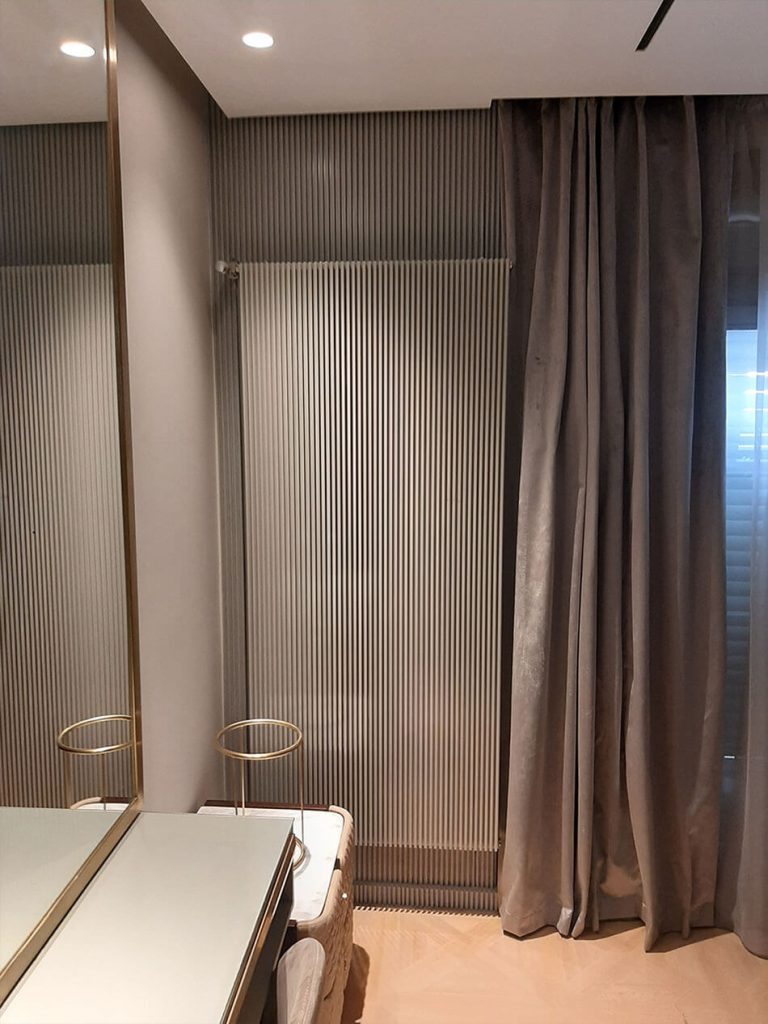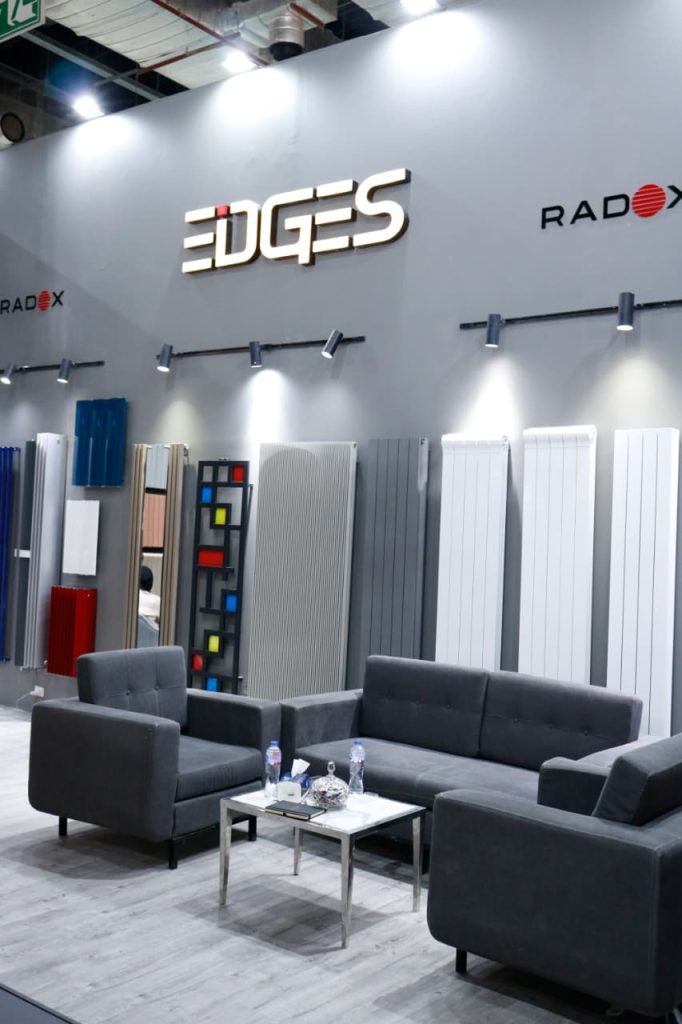Transform Your Home with Our Best Radiator Collection at Edges. Elevate your experience with our remarkable offerings that masterfully combine style and practicality. Embrace a world where aesthetics and functionality unite seamlessly, ensuring that every decision you make reflects both elegance and purpose. Choose us, and transform your vision into reality! The modern home. Choose from electric, hydronic, and designer models that blend form and function while providing exceptional warmth. Elevate your interior and create an inviting atmosphere today!
Energy-Efficient Radiators
Save energy with advanced radiator systems. Eco-friendly heating that lowers bills and keeps your home warm all year.
Shop premium radiators online. Fast delivery, competitive prices, and expert support—find the perfect fit for your heating needs.
What Is a Radiator Heater?
A radiator heater is a heating system that uses hot water or steam to heat a room. The heat is generated by a boiler, which heats the water or moisture and then sends it through pipes to the radiator. The radiator then releases the heat into the room, warming it up.
How Do Radiator Heaters Work?
Radiator heaters work by using convection to heat a room. Convection is the transfer of heat through a fluid (in this case, water or steam). The hot water or steam flows through the pipes to the radiator, heating the air around it. As the air heats up, it rises, and cooler air moves in to take its place. As a result, it creates a convection current that circulates warm air throughout the room.
How do Radiators work?
- The heat source heats the water in the boiler.
- From there, the water travels to the radiators and transfers its heat to the radiator material, which is usually metal, a good conductor of heat.
- The radiator then transfers its heat to the air, and that’s where convection comes into play. Thermal convection is based on the natural law that hot air rises and cold air drops.
- As the radiator warms the air around it, that warmed air rises and flows into the room.
- At the same time, the cold room air drops to the floor and is drawn toward the bottom of the radiator, where it becomes heated.
- This hot-and-cold rotation naturally heats the room without the need for circulation fans or other mechanical means.
- All standard hot water radiators have an inflow pipe and an outflow pipe, and many have some kind of temperature control for adjusting the flow of hot water through the radiator and thus the heat it puts out.
- Radiators require a flow temperature of around 80°C and a 70°C return.
- Feel comfortable by controlling the temperature of each radiator with a Thermostatic Head.
The components of radiator heaters.
- Boiler (Water Heater)
- The boiler is the heart of the radiator heating system. It heats the water or steam that is used to heat the room. Boilers come in different types and sizes and can be fueled by gas, oil, or electricity. Each fuel type has advantages and disadvantages, and choosing the right kind of boiler for your home will depend on your specific needs and preferences.
- Fins and Coils
- Fins and coils are used to increase the radiator’s surface area, allowing it to transfer more heat into the room. The fins and coils are typically made of metal, such as aluminum or copper, which are excellent conductors of heat. Increasing the radiator’s surface area increases the heat transfer rate, which means that the room can be heated more efficiently.
- Fins are thin, metallic plates attached to the radiator’s surface.
- Pipes
- Pipes are an essential component of any heating system. They are responsible for transporting the hot water or steam from the boiler to the radiator, where the heat is distributed throughout the room. Two pipe types are used in heating systems: copper and steel.
- Valves
- Valves are essential to any heating system, whether for residential or commercial purposes. These valves are designed to regulate the flow of water or steam through the pipes and can be adjusted to control the temperature of a room or zone.
- Thermostat
- A thermostat is a device that is commonly used to control the temperature of a room or building. It is a small electronic device near the heating system, such as a radiator or furnace. The thermostat works by monitoring the room’s temperature and adjusting the heating system to keep the room at a desired temperature.
Energy source
- Hot water
- A hot-water radiator consists of a sealed hollow metal container filled with hot water from a boiler or other heating device by gravity feed, a pump, or natural convection. As it gives out heat, the hot water cools and sinks to the bottom of the radiator and is forced out of a pipe at the other end. Anti-hammer devices are often installed to prevent or minimize knocking in hot water radiator pipes.
- Electricity
- Unlike steam or hot water systems, which receive heat from a boiler, electric radiators produce heat from electricity right at the location of the radiator. Consequently, this heat may be transferred to a fluid, such as oil, inside the radiator. Furthermore, this localized heating can lead to greater efficiency and control over room temperatures.
- The oil circulates inside the radiator by convection, which distributes the heat from the heating element to the surface of the radiator. Smaller electric radiators have the advantage of being portable, as they do not need to be connected to pipework.
- Some electric radiators can also use hot water, which is especially common for heated towel rails. These radiators utilize hot water when the central heating system is active. However, when there is no need to heat the entire building, they can switch to electricity. This dual functionality offers flexibility and efficiency, enabling users to optimize their heating based on immediate needs. As a result, it enhances comfort while potentially reducing energy costs.
What are the types of Radiators?
Radiators come in various types, each designed for different heating needs and aesthetics. Here are some common types:
- Panel Radiators: These are the most common type, available in single, double, or triple panel configurations. They efficiently heat rooms by circulating hot water through flat panels.
- Column Radiators: Featuring vertical columns, these radiators have a traditional look and provide excellent heat output.
- Towel Radiators: Found in bathrooms, these radiators warm towels while also heating the space.
- Low Surface Temperature (LST) Radiators: Designed for safety, these radiators have lower surface temperatures, making them ideal for schools and hospitals.
- Skirting Board Radiators:These fit discreetly into skirting boards, saving space while providing effective heating.
- Underfloor Heating: Instead of wall-mounted radiators, this system distributes heat evenly through pipes or electric elements beneath the floor.
- Electric Radiators: These operate independently from central heating systems and are ideal for spaces without plumbing access.
- Dual Fuel Radiators: A combination of electric and central heating, allowing flexibility in heating options.
Each type has its advantages depending on the space and heating requirements. Let me know if you need help choosing the best one for your needs!
What are the advantages of each radiator type?
- Panel Radiators – Efficient and widely used, they heat up quickly and distribute warmth evenly.
- Column Radiators – Provide excellent heat output and add a stylish, traditional look to a room.
- Towel Radiators – Keep towels warm and dry while also heating the bathroom.
- Low Surface Temperature (LST) Radiators – Safer for homes with children or elderly individuals, as they don’t get too hot to touch.
- Skirting Board Radiators – Space-saving and discreet, they blend into the room while providing effective heating.
- Underfloor Heating – Offers even heat distribution and eliminates the need for visible radiators.
- Electric Radiators – Independent from central heating, making them ideal for spaces without plumbing access.
- Dual Fuel Radiators – Provide flexibility by working with both electric and central heating systems.
Each type has unique benefits depending on your space and heating needs. You can find more details here. Let me know if you need help choosing the best one for your home!
Radiation vs. convection
A radiator is a device that transfers heat to a medium primarily through thermal radiation. In practice, the term radiator is often applied to any number of devices in which a fluid circulates through exposed pipes (often with fins or other means of increasing surface area), notwithstanding that such devices tend to transfer heat mainly by convection and might logically be called convectors.
The terms convection heater and convector refer to a class of devices in which the source of heat is not directly exposed. As domestic safety and the supply from water heaters keep temperatures relatively low, radiation is inefficient in comparison to convection.
Towel Rails Radiator
A towel rail radiator, also known as a heated towel rail, is designed to warm towels before use. For many years, European hotels have utilized them as both towel dryers and racks. These towel warmers serve a dual purpose: they can dry towels and heat the bathroom environment. There are two main types of towel rails: traditional ones that are connected to plumbing and heat water from a central boiler, and electric ones that use an electrical resistance to heat water or oil contained within the unit. Generally, towel rails are installed by plumbers.
Composition and functioning
Towel dryers can be made from different metals such as steel, stainless steel, or aluminum. In some types, brass or copper is used. The finish can be in chrome plating, polished steel, or lacquer.
Dryers can be heated electrically (heating cartridge or heating cable) or by circulating hot water (connected to the central heating). Often, a combination of the methods is used. In these cases, the dryer is heated by hot water in the wintertime and by electricity in the summer. A towel dryer, with high output, can also serve as a radiator in a small bathroom.Dryers come in a variety of appearances, including ladder types, turnable types, and others.
Advantages
Towel warmers dry towels more quickly. Towel warmers come in varied shapes. There are towel warmers of different sizes, from (50 by 70 centimetres (20 in × 28 in)) to those two metres (6 ft 7 in) in height.
Frequently Asked Questions
- What kind of heating system uses radiators?
- There are three types of radiator heating systems: Steam heat radiators, Hot water radiators, and Electric radiator heaters. Steam Heat Radiators: A steam heating system uses a boiler to turn water into steam. The steam then funnels through pipes throughout the home, using a series of pipes to either: Ceramic radiators.
- Are radiators efficient for heating?
- Overall, radiators are a great choice for home heating. They are energy efficient, safe, cost-effective, and comfortable. So if you’re looking for a reliable and efficient heating solution, electric radiators are definitely worth considering.
- Are radiators heated by gas or electricity?
- What Are the Different Types of Radiators? Hot water and steam are the two main methods of distributing heat in a radiator system. Both types of radiators connect to a boiler, which may be powered by electricity or natural gas.
- What is the most efficient radiator temperature?
- For a modern combi boiler, the radiator heating temperature should be set for a flow temperature of between 60 and 70°C. Any higher than this and the boiler won’t enter condensing mode and will not be at its optimum efficiency and performance.
- What fuel does a radiator use?
- Some run on electricity, while others rely on gas. If you recently moved into or purchased a home with radiators, then you are in a boiler-heated property.
- What heating source is a radiator?
- A radiator heater is a heating system that uses hot water to heat a room. The heat is generated by a boiler, which heats the water or moisture and then sends it through pipes to the radiator. The radiator then releases the heat into the room, warming it up.


